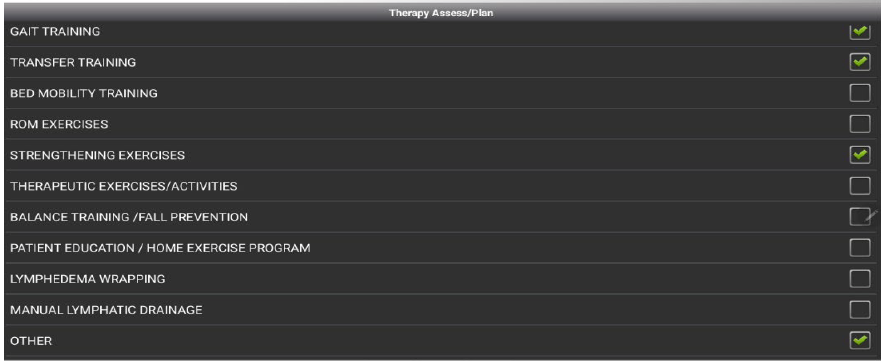Purpose:
To guide therapists on the use of the Assessment / Plan to guide strong clinical documentation and justification of skilled therapy services that are reasonable and necessary.
Question Intent:
The Therapy Assessment / Plan section is intended to provide the interpretation of objective testing as well as the justification of why skilled therapy is reasonable and necessary for the patient at this time. It is important that these primary components are documented to support the patient’s need for skilled therapy services.
Per Medicare Benefit Policy Manual Chapter 7 - Home Health Services, the Therapy Assessment / Plan portion of our notes helps support that "the skilled services must also be reasonable and necessary to the treatment of the patient's illness or injury or to the restoration or maintenance of function affected by the patient's illness or injury. It is necessary to determine whether individual therapy services are skilled and whether, in view of the patient's overall condition, skilled management of the services provided is needed."
At Reassessment (at least every 30 days) timepoints therapy documentation supports continued payment based on a rationale that supports skill. Comparing current and prior levels with discussion to their relevance is a requirement both for CMS compliance and auditing bodies. Per the Medicare Benefit Policy Manual Chapter 7 - Home Health Services “At least once every 30 days, for each therapy discipline for which services are provided, a qualified therapist (instead of an assistant) must provide the ordered therapy service, functionally reassess the patient, and compare the resultant measurement to prior assessment measurements. The therapist must document in the clinical record the measurement results along with the therapist’s determination of the effectiveness of therapy, or lack thereof.”
Response – Specific Instructions:
- At Reassessment (33) visits the therapist will select Therapy Assess/Plan in their visit note. They will elaborate on the patient’s progress, or lack thereof, in the first two questions:
- First Question – Use this question to address your patient’s progress towards goals by comparing the current objective tests/measures to the initial/previous tests and measures. This comparison is a mandatory expectation to meet compliance for these visits. Below is an example of what is expected. Compare each test showing prior and current values. Reference goal progress and status. Simply list each test and summarize.

- Second Question – Provide rationale for continued services, or if there is no progress or a regression discuss why and what will be done to change that trajectory. The below example is for a PT patient who is improving. Note that the description is specific and not using generic terms of “functional” to describe progress.

- Next, the Therapist will determine the plan by determining to continue or discontinue services.
- If selecting ‘Discontinue’, proceed with the most appropriate reason:


- If selecting ‘Continue’, proceed with the ‘plan’

- The ‘plan’ is not an order. If you decide to provide a new intervention that was not in the original plan because of the reassessment findings you will need to complete a “Plan of Care Update” to create a new order for provider signature.




